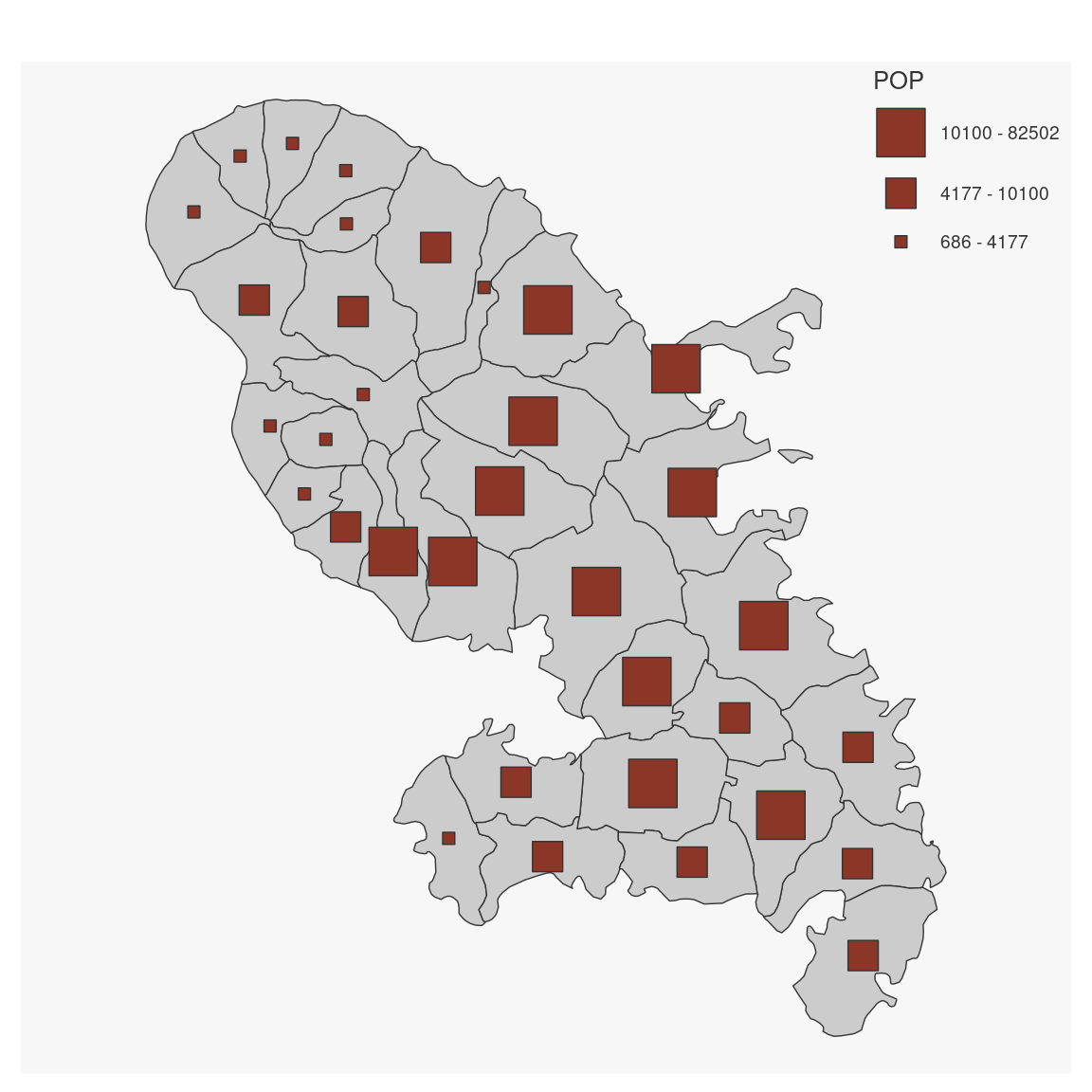Plot graduated symbols based on quantitative data.
Usage
mf_grad(
x,
var,
breaks = "quantile",
nbreaks = 3,
col = "tomato4",
border = getOption("mapsf.fg"),
pch = 21,
cex,
lwd,
leg_pos = mf_get_leg_pos(x),
leg_title = var,
leg_title_cex = 0.8,
leg_val_cex = 0.6,
leg_val_rnd = 2,
leg_frame = FALSE,
leg_adj = c(0, 0),
leg_size = 1,
leg_border = border,
leg_box_cex = c(1, 1),
leg_fg = getOption("mapsf.fg"),
leg_bg = getOption("mapsf.bg"),
leg_frame_border = getOption("mapsf.fg"),
add = TRUE
)Arguments
- x
object of class
sf- var
name(s) of the variable(s) to plot
- breaks
either a numeric vector with the actual breaks, or a classification method name (see mf_get_breaks and Details)
- nbreaks
number of classes
- col
color
- border
border color
- pch
pch (point type) for symbols
- cex
cex (point size) for symbols
- lwd
border width
- leg_pos
position of the legend, one of 'topleft', 'top','topright', 'right', 'bottomright', 'bottom', 'bottomleft', 'left' or a vector of two coordinates in map units (c(x, y)). If leg_pos = NA then the legend is not plotted. If leg_pos = 'interactive' click onthe map to choose the legend position.
- leg_title
legend title
- leg_title_cex
size of the legend title
- leg_val_cex
size of the values in the legend
- leg_val_rnd
number of decimal places of the values in the legend
- leg_frame
whether to add a frame to the legend (TRUE) or not (FALSE)
- leg_adj
adjust the postion of the legend in x and y directions
- leg_size
size of the legend; 2 means two times bigger
- leg_border
symbol border color(s)
- leg_box_cex
width and height size expansion of boxes
- leg_fg
color of the legend foreground
- leg_bg
color of the legend backgournd
- leg_frame_border
border color of the legend frame
- add
whether to add the layer to an existing plot (TRUE) or not (FALSE)
Details
Breaks defined by a numeric vector or a classification method are
left-closed: breaks defined by c(2, 5, 10, 15, 20)
will be mapped as [2 - 5[, [5 - 10[, [10 - 15[, [15 - 20].
The "jenks" method is an exception and has to be right-closed.
Jenks breaks computed as c(2, 5, 10, 15, 20)
will be mapped as [2 - 5], ]5 - 10], ]10 - 15], ]15 - 20].
Examples
mtq <- mf_get_mtq()
mf_map(mtq)
mf_map(mtq, "POP", "grad", pch = 22)

